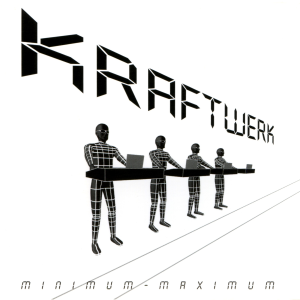I loved the default theme, the splash screen, all of the customization options, and how lightweight it was, but it’s missing some of the conveniences and polish of GNOME, KDE, or even LXQt and Xfce. Using an independent toolkit meant that none of my apps looked consistent, even after trying my best to find a theme that supported everything, and if I explored the settings beyond a surface level things started looking ancient and clunky.
Definitely underrated, and really impressive for how much they could pack into a desktop targeted at older PCs, but still missing quite a bit.
@ipacialsection
I think this description describes it very well. This is also how I remember it from back in the 2000’s when I tried to use it.It is indeed a lightweight DE.
How light is it when compared to xfce?
Lighter, I think. About on par with LXQt or Trinity (KDE 3).
I tried it once like 5 years ago (hope thats recent enough lol), when I heard that they have per monitor virtual desktops.
But I was missing so many KDE Plasma features that I loved, that I just had to go back. I don’t remember exactly which features though.
@Deckweiss
Makes sense. I think I would also miss some if I switched.Per monitor virtual desktops is really cool though.
Windows 11 covers that workflow even better now with a feature called window grouping. I think I’ll need to write a kwin plugin or something for that…
sorry for the offtopic rant, but thats the major thing which comes to mind when somebody mentions enlightenment!
@Deckweiss
I didn’t know about that feature in Windows 11 even though I use it on my work laptop but I guess it’s because I only use the laptop’s screen when I work 😂I think it’s even better on a single monitor when you have a lot of windows open.
It puts multiple windows into a group, so you only see one entry in the taskbar. When you click that, all the grouped windows get minimized/madimized.
I used it on the work laptop as well. And just grouped my different sub workflows, each of which had 2-3 windows.
That way I could switch the task without juggling multiple windows.
@Deckweiss
Interesting. I should check it out. Thanks for the suggestion
Ive never stopped, just recently did my first nixos build with enlightenment. Had an old XPS with 4k screen works nicely. I like the reenlightened theme
@REdOG
Have you tested the Wayland implementation of Enlightenment?No, I guess Wayland is kind of on my to-do list…I just don’t need anything it offers. I’m grumpily enough implementing systemd already
@REdOG
I see. Well for me too, Xorg offered all the features I need and is still more well supported than Wayland in some areas, but on my system Wayland has so much better performance. On Xorg I was having mouse lags, on Wayland it’s just smooth.
This brings back some memories from years ago. Enlightenment was fairly popular at some point and I think the author “Rasterman” was employed at RedHat. Some Linux distribution may even have had it as the default ?
There was a short period of time when enlightenment was the default window manager for Gnome, later to be replaced by Sawfish. It was a hideous experience by the way.
Early Gnome was weird. The Gnome File Manager was also originally based on the terminal program Midnight Commander.
There’s Bodhi Linux, which is basically Ubuntu+Enlightenment.
Thank you.
I have tried it a few times but I could never really get into it. For one thing, it is a tiny island unto itself where most of what you need to run is foreign to it.
In the end, I found light-weight GTK and Qt options superior.
Based on some Lemmy comments, I tried Q4OS with the Trinity desktop ( basically KDE 3 ) and I was surprised how good it was. I used the 32 bit edition but it booted to a full GUI desktop in something like 110 MB and it was surprisingly usable. I guess I should not be too shocked. MATE is essentially GNOME 2 from the same era and, though not my favourite, it is still fine.
Perhaps the viability of Linux as a desktop has had more to do with the applications than the desktop itself.





